#haseki humasah sultan
Photo
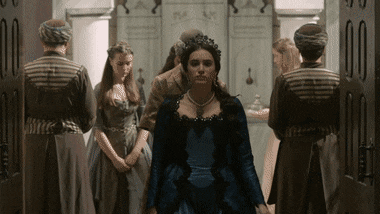
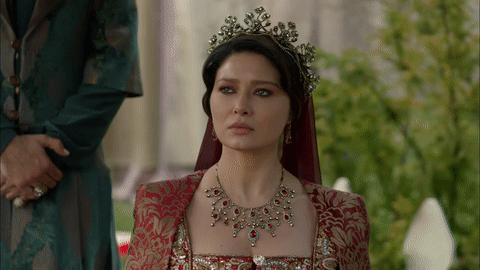



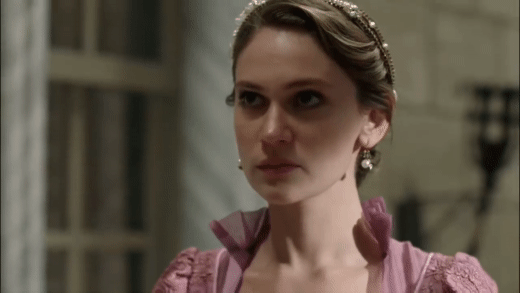




Women that give me bi panic from season 2 of Muhtesem Yuzyil: Kosem (Magnificent Century: Kosem):
1. Hande Doğandemir as Turhan Hatice Sultan
2. Nurgül Yeşilçay as Mahpeyker Kosem Sultan
3. Leyla Feray as Ayse Sultan
4. Ece Çeşmioğlu as Atike Sultan
5. Müge Boz as Humasah Sultan
6. Farah Zenyep Abdullah as Farya Sultan
7. Alma Terzic as Ester Hatun
8. Sezgi Sena Akay as Sanavber Hatun
9. Gunes Sayin as Kalika Hatun
10. Aslı Tandoğan as Gevherhan Sultan
#Ece Çeşmioğlu#burnaz atike sultan#atike sultan#mahpeyker kosem sultan#Kosem Sultan#nurgul yesilcay#farah zeynep abdullah#princess farya#farya sultan#Hande Doğandemir#Turhan Hatice Sultan#turhan sultan#leyla feray#ayse sultan#haseki ayse sultan#muge boz#humasah sultan#telli haseki humasah sultan#haseki humasah sultan#alma terzic#ester hatun#sezgi sena akay#sanavber hatun#gunes sayin#kalika hatun#Aslı Tandoğan#gevherhan sultan#muhtesem yuzil kosem#magnificent century kosem#not in any particular order
60 notes
·
View notes
Text
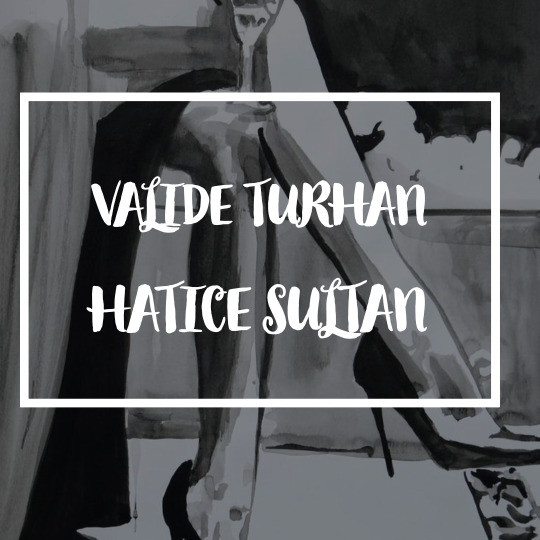



#history#magnificent century#muhteşem yüzyıl#ottoman#sultanas#ottoman sultanas#ottoman history#ottoman valide#valide sultan#haseki nurbanu sultan#nurbanu sultan#turhan sultan#telli humasha sultan#Humasah sultan#Halime sultan#valide halime sultan#muhtesem yuzyil kosem#muhtesemyuzyilkosem
12 notes
·
View notes
Text
This Brown Fur neckline is worn on Nur Fettahoglu as Mahidevran Sultan in Magnificent Century in Season 1 Episode 8 (2011) and worn again on Müge Boz as Telli Haseki Humasah Sultan in Magnificent Century Kösem in Season 2 Episode 27 (2017)


#recycled jewellery#magnificent century#magnificent century kösem#mahidevran sultan#Telli Haseki Humasah Sultan#accessories#reused accessories#historical drama#period drama#reused costume
1 note
·
View note
Text
Sultanate of Women (4/7)
Safiye Sultan (c. 1550 – 1621)
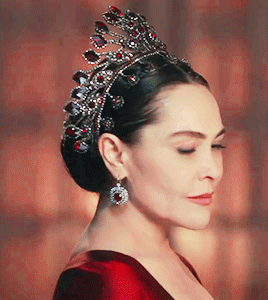
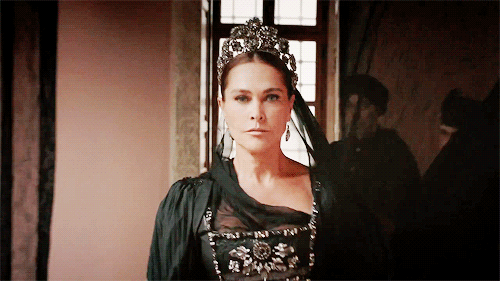

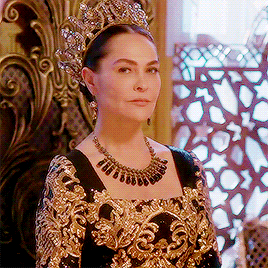
Safiye Sultan parents are not known
Haseki Sultan (Legal Wife) of Sultan Murad Ill, Valide Sultan of Sultan Mehmed Ill, and Buyuk Valide Sultan of Sultan Ahmed I
Mother of Sultan Mehmed Ill, Sehzade Mahmud, Humasah Sultan, Ayse Sultan, Fatma Sultan, Mihrimah Sultan, Sehzade Yahya (possibly).
Grandmother of Sehzade Selim, Sehzade Suleyman, Sehzade Mahmud, Sultan Ahmed I, Sultan Mustafa, Sehzade Cihangir, Sehzade Osman, Sah Sultan, Hatice Sultan, Sultanzade Mahmud, Sultanzade Hasan Bey, Marice, and Elena.
Mother-in-law of Handan Sultan, Halime Sultan, Nigar Mustafazade Mehmed Pasha, Serdar Ferhat Pasha (?), Damat Ibrahim Pasha,Yemisci Hasan Pasha, Güzelce Mahmud Pasha, Damad Halil Pasha, Damad Cafer Pasha, Damad Hizir Pasha, Mirahur Ahmed Pasha, Gerkes Mehmed Ali Pasha, and Anna Caterina of Drisht (?)
Fun Fact For Newbies: Safiye Sultan was the first women of the Sultanate of Women to be Haseki Sultan, Valide Sultan, and Buyuk Valide Sultan. Safiye Sutan also lived through 6 Sultan reigns: Sultan Suleiman, Sultan Selim II, Sultan Mehmed III, Sultan Ahmed I, Sultan Mustafa I, and Sultan Osman II.
26 notes
·
View notes
Photo
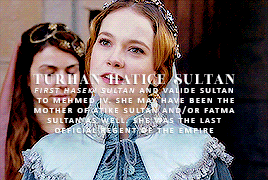

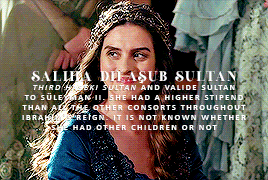

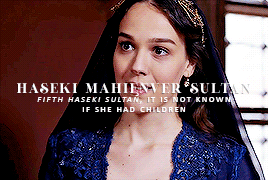
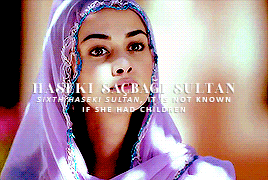

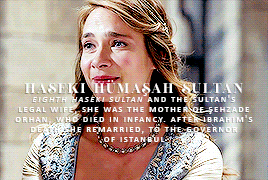
𝙤𝙩𝙩𝙤𝙢𝙖𝙣 𝙘𝙤𝙣𝙨𝙤𝙧𝙩𝙨: Sultan Ibrahim
The presence of more than one haseki was a significant change in the reigns of Murad and Ibrahim, signaling that the age of the favorite was coming to an end. In this period the meaning of the title haseki begins to shift from a single "favorite" to something more general like "royal consort," similar to the earlier khatun. This title deflation was a sign of the return of an earlier principle of royal reproduction, that of a number of concubines roughly equal in status. That other concubines were no longer consigned to languish in the shadow of a favorite is suggested not only by the fact that each was endowed with the title haseki but also that their stipends were on the whole equal. — Leslie P. Peirce, The Imperial Harem: Women and Sovereignty in the Ottoman Empire
#history#historyedit#ottoman history#turhan hatice sultan#haseki hatice muazzez sultan#saliha dilasub sultan#haseki ayse sultan iii#haseki mahienver sultan#haseki sacbagli sultan#haseki sivekar sultan#haseki humasah sultan#ottomanladiesedit#*consorts
187 notes
·
View notes
Photo
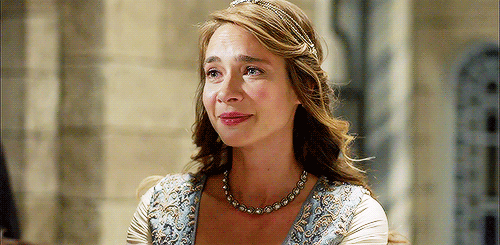

#magnificent century: kosem#muhtesem yuzil kosem#kosemedit#perioddramaedit#haseki humasah sultan#Müge Boz#S2E59 The Reign of Sable#mcks2#my edits
132 notes
·
View notes
Text
Portrait of Mihrimah Sultan/Mihrimah szultána portréja
Mihrimah was the most influential true-born sultana ever: she had the highest salary; she was a worthy child and descendant of her mother; she was a true charitable person who also had enormous political influence; her father’s partner and counselor for a lifetime; the only sibling ever to be an (unofficial) valide sultan to her brother; the "greatest princess" and matriarch of a dynasty ... She was a legendary persona, a unique princess.
Origin and early years
There is an amazing legend about the birth of Mihrimah Sultan. According to this, she was born on 21 March 1522, and for this reason the two mosques - built for her years later, designed by Mimar Sinan - were created so that on the princess's birthday, when the sun goes down behind the minaret of the Mihrimah Mosque in Edirnekapı, the moon just goes up between the two minarets of the other Mihrimah Mosque. An important part of the legend is that Mimar Sinan once had the opportunity to see the sultana and immediately fell in love for her. For this reason, his works of outstanding beauty and precision, the Mihrimah Mosques, are also seen as the embodiment of platonic love.
The legend is beautiful, but unfortunately not real. Mihrimah's brother, Mehmed, was born around October 1521, so Mihrimah could not be born in March 1522. Unfortunately, we do not have any evidence to know exactly when she was born. The discrepancies between the Islamic calendar and our calendar used today make it even more difficult to pinpoint. Most likely, in any case, she was born after August 1522, but definitely before 1523.
Although the date of her birth was unknown, the fact of her birth itself was distinctly extraordinary. According to tradition, if a concubine had given birth to a son, she could not return to the sultan's bed, so basically Hürrem, after giving birth to a son in the autumn of 1521, could no longer have been Sultan Suleiman's sexual partner. However, Hürrem not only returned to Suleiman’s bed, but became the sultan’s exclusive sexual partner and, after Mihrimah, she gave birth to four more children for the sultan. Hürrem had Mihrimah as her only daughter, while Suleiman already had a daughter, Raziye, who, however, died in an epidemic before Mihrimah was even born.
Mihrimah, as the only living little princess, was certainly not only the apple of her father's eye, but the light of the whole harem. She spent most of her time with her mother and governess, but they certainly also had regular contact with her family-centric grandmother, Hafsa. It was probably by this time that she began to learn the basics of embroidery from her mother. Hürrem was particularly talented in embroidery, her works being so outstanding that she sometimes sent them as gifts to the leaders of other dynasties. And Mihrimah was reportedly a great student to her mother, who mastered the technique well. In addition to her mother, her father also played an important role in her childhood. Suleiman often visited his family at the Old Palace, and from 1534 they moved together at the Topkapi Palace. From then on, Mihrimah could spend even more time near her father, whom she had regularly mesmerized with her mere existence.

Marriage and husband candidates
The marriage of imperial princesses has always been an important political tool. However, Suleiman did not make much use of this opportunity. His sisters were even married off by their father, Selim I, and after their widowhood he did not force them to marry again. He had a big amount of respect and love for the female members of his family, so he was expected to treat his daughter the same way. Suleiman, however, not only did not marry off his sisters again and again because of his kind nature, but fortunately he did not need allies what marriages could have given him. The empire was rising, the nation had never been so strong, and everyone loved him as a sultan, so simply he did not need allies by marriages.
Ttherefore, there was no particularly urgent need to marry off Mihrimah and it was not necessary to choose the future husband from among the senior and influental pashas. Thus, Suleiman could easily search for a statesman he liked, even from a lower position. Suleiman wanted a reliable, faithful husband for Mihrimah, while Hürrem would prefer a young and handsome husband. Hürrem recommended the Egyptian beylerbey to Suleiman, who was notoriously handsome and young. However, the sultan did not like the man, as he had a reputation as a womanizer, and it was rumoured that he had syphilis. Of course, many such rumors spread unfoundedly, but Suleiman did not investigate the Egyptian beylerbey, he simply rejected the idea. He had other plans. He singled out a particularly humble and trustworthy guy, who he had long known for, to Mihrimah’s side. His choosen one, Rüstem, was his personal servant for almost 10 years from 1526, after which he served as a governor for the sultan in various provinces of the empire. They were very close to each other, and Rüstem also taught the brothers of Mihrimah for a while, so the princes were well known by him. In addition, it is also likely that Mihrimah also had the opportunity to meet the pasha before, as he may have been in the same place as the sultana because of his proximity to the sultan. Eventually, of course, Hürrem was also accepted Suleiman’s husband candidate and the only question was whether Mihrimah would accept him.
Rüstem was roughly seventeen or twenty years older than Mihrimah, one of the ambassadors reported that he was not a particularly handsome guy, but was short and red-faced. So he was clearly not a teenage girl's dream, even if most sultanas had to marry much older pashas than Rüstem. Yet Mihrimah agreed to the marriage. The question arises, could she have said no at all? As a matter of fact, probably yes. She was Suleiman's favorite child, apple of his eyes, if she would had a personal and deep resentments towards Rüstem, she could have said no. But she didn't. Mihrimah was a very smart woman who stood by her mother's side since her childhood and who probably tryed to help her. She was obviously aware of the law of fratricide, that they had to do everything they could to remove Mustafa — his eldest half-brother — from their way, and with this, saving the lives of her blood-brothers. And Rüstem was a great opportunity to do so, as he had known and loved the sons of Hürrem since childhood, thus there was no question that he would side with Hürrem and Mihrimah in this bloody war. So for the sake of her brother's future, Mihrimah said yes to marriage.

Marriage and relationship with her husband
The wedding took place in 1539. Rüstem could have been around 35 at the time, while Mihrimah was 17 years old. The circumcision ceremony of Bayezid and Cihangir was held at the same time as the wedding of Mihrimah. The double ceremony eventually lasted for 15 days, during which the entire population of Istanbul shared the joy of the Sultan’s family during the festivals and feasts. Due to his position, Rüstem lived in Istanbul, so Mihrimah did not have to move far away from her parents either. That’s why Rüstem was a great choice, as neither Suleiman nor Hürrem wanted to lose their daughter. And Mihrimah, with her strong will, would certainly have manage to stay in the capital as well.
There is no question that it was not a love marriage, however, the relationship was by no means as bad as it was portrayed in the popular series. Mihrimah could at least marry a man he knew, who was a committed supporter of her brothers and was extremely loyal to her father, the Sultan. Their marriage was crowned in 1541 by the birth of their first child. Ayşe Hümaşah was the first child of Rüstem, the first grandson of Hürrem. By now, Suleiman was grandfather of at least one, as Prince Mustafa had a six-year-old daughter, but later Ayşe Hümaşah became his favorite grandchild. Mihrimah and Rüstem later — it is not known exactly when — had another child, a son, Osman. This suggests that they may have had a relatively balanced relationship, as the sultanas could have refused to have sexual intercourse with their husbands. Their fair relationship is also indicated by the fact that they had many charitable projects managed together.
The marriage of the two ended in 1561, with the death of Rüstem Pasha. However, their mutual respect is shown in the will of Rüstem. He left everything to his wife and daughter: the management of his charities was largely given to his daughter, but Mihrimah was given much similar tasks also. In addition, it was Mihrimah who completed the Rüstem Pasha Mosque, which was only half-finished at the time of Rüstem's death.
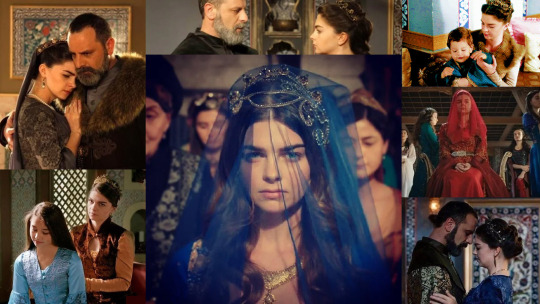
Her intrigues
According to legend, Mihrimah, with the support of her mother Hürrem, wanted to make Rüstem the next Grand Vizier, which plan was finally successfully completed. However, it would be wrong to think that only the actions of the two women led to the appointment of Rüstem. Rüstem had been the sultan's confidential man for twenty years so far, Suleiman found him worthy to be the husband of his only daughter, it was clear that the sultan himself wanted to give this position to Rüstem once. However, Mihrimah and Hürrem were not satisfied with this, but wanted Rüstem to enjoy the prerogatives that Ibrahim had previously enjoyed. The sultan, on the other hand, sharply refrained from letting anyone as close to him as he had done with Ibrahim.
One of the important cornerstones of Mihrimah and Rustem’s marriage was the multitude of common intrigues. Mihrimah was very active politically, with her husband she often was able to uccessfully convince the sultan. This was the case when, in 1542, Suleiman wanted to take the infant Hungarian king and his mother, Queen Isabella, to Istanbul as political prisoners. However, being a smart woman, Izabella knew she could get help from the sultan's daughter and wife. So she complained to Mihrimah and Hürrem about how young she was widowed, how she was left alone with her son and now even the sultan want to deprived her and her son of their throne. In addition, of course, she also sent very valuable gifts to Mihrimah and her husband. She must have mentioned her descent in her letter as well. Izabella was the daughter of the King of Poland, from whose country Hürrem Sultan came from. And this was an important link between Hürrem, Mihrimah and Izabella. Either way, Izabella persuaded Hürrem and Mihrimah, who together with Rüstem, easily persuaded the Sultan to support Izabella and her son instead of bringing them to Istanbul as prisoners. Thus it happened that János Zsigmond Szapolyai became the next king of Hungary.
However, the main task of the couple was to support the brothers of Mihrimah, especially Prince Mehmed. By 1543 it was quite clear that they wanted Mehmed to ascend the throne and the trio had done all they could for this aim. However, the early death of the prince made their situation more difficult. For a time they did not care which prince of theirs should be the next sultan, they worked only and exclusively to get rid of Prince Mustafa. It took another ten years before they were finally successful and Mustafa was executed by the Sultan. Exactly how much Mihrimah was involved in this process and what she did is unknown, as there is no evidence at all to prove the guilt of Hürrem or Mihrimah. But nonetheless, it would be naive to think that Mihrimah, who was the copy of her mother both in body and soul, would not have been involved in the struggle of her beloved mother and husband.
It seems that after Mustafa's death, the trio voted for Prince Bayezid, while the Sultan himself favored Selim. Perhaps that is why Bayezid was chosen: to balance the situation of the two princes. However, Bayezid’s nature resembled a timed bomb, so they were afraid that if he was not supported, he would raise the Sultan’s anger with a reckless act. Thus, the fact that Bayezid was supported does not clearly mean that they also wanted him to be the one sitting on the throne.

Loss of her mother
1558 brought a drastic change in Mihrimah's life. Hürrem Sultan died. Mihrimah and her mother were especially close to each other, of the known mother-daughter relationships, the two of them had the closest. Mihrimah visited Hürrem every day at Topkapi Palace, spending more time there than in her own palace. She also regularly accompanied her mother on her travels and visited her siblings together. Thus, the loss of Hürrem was certainly a great pain for Mihrimah. However, Hürrem, at the time of her death, handed over her responsibilities to her daughter, who thus had no time to mourn, she had to take immediate action to continue her mother's path. And this meant nothing more than the support of the Sultan and the protection of Prince Bayezid.
However, Mihrimah could not influence Bayezid like their mother, so she could not meke the prince to wait patiently and not annoy the sultan. Bayezid soon revolted against the sultan, and for this, according to several sources, Bayezid asked Mihrimah for money. And Mihrimah gave it to him. When the sultan realized this, he immediately questioned his daughter, who proudly replied that her mother asked her to do anything for Bayezid on her deathbed, so she was not guilty of anything. We don’t know how Suleiman reacted, but their relationship seems to have deteriorated for a while.
However, Mihrimah's support was not enough either, Bayezid failed in the decisive battle of the rebellion he fought, lost the battle and was forced to flee the battlefield. By this time, both Mihrimah and Rustem were helpless. And Rustem soon lost his life, so there was no one left to save Bayezid and his sons from execution. Bayezid was executed in 1562, and a few months later the sultan organized a huge wedding to marry off the daughters of the heir, Prince Selim, one of the daughters of the late Prince Mustafa, and the daughter of Bayezid who was at the appropriate age for marriage. Mihrimah faced her father again because of the wedding. Most sources say that it was only during the wedding preparations that Mihrimah learned that Bayezid had been executed, as by then the news had not reached Istanbul and Suleiman had ordered complete secrecy. Mihrimah, shattered and enraged by grief, found it deeply outrageous that a ceremony was being held in the empire shortly after his brother was executed. Therefore, she tried in every way possible to make the ceremony impossible, for example by forbidding anyone in the harem to have fun and show happiness. Since Mihrimah lived in the Old Palace since the death of Rustem and she probably led the harem also, her orders were accepted and there was no amusement in the harem. According to reports from the ambassadors, Suleiman was shattered and disappointed. However, upon hearing the news, Selim allegedly said, angrily, that he never loved his sister, nor her husband, nor their mother, for choosing Bayezid instead. However, the reliability of this news is in doubt, for the ambassador who wrote it deeply despised Selim.
Her relationship with her father seems to have settled over time, however, since in 1565, for example, Mihrimah persuaded her father to initiate a campaign against Malta, and she herself offered her own treasury, teasing to exhibit 400 galleys to the army. Thus, although there is no doubt that the execution of Bayezid left its mark on their relationship forever. It was probably at the end of his life that Suleiman could have his only daughter with him again.
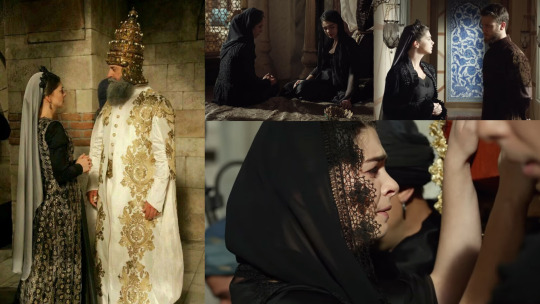
The new era
Mihrimah lost her father in 1566 and a new world began for her with the reign of her younger brother, Selim. The relationship between the two was not the best, as Mihrimah was always on Bayezid’s side, but by this time only the two of them were alive from the family, so they chose togetherness instead of hatred. First, Mihrimah extended a helping hand to Selim when he was blackmailed and humiliated by the Janissaries before his accession to the throne. The Janissaries wanted to get their ascension fee immediately when Selim had not even ascended the throne. At that time, Selim did not have access to the imperial treasury, and it would have been too long to bring money from his own province, so Mihrimah paid the soldier's allowance for Selim to occupy the throne at all without riots. Selim did not remain ungrateful, for he made his sister the head of the Old Palace harem, and thus a de facto valide sultan.
During Selim's reign, she basically stayed in the background and spent her time on charity, construction projects instead of politics. Mihrimah has supported many construction projects, but the most famous are undoubtedly the two Mihrimah mosques, which are the most beautiful works of the imperial architect Mimar Sinan. She also supported Nurbanu's efforts to free two captured Turkish women from the French. Together, with Nurbanu’s daughters and her own daughter, they finally persuaded the Queen of France to send the women back home. Based on this, we can think that she had a good relationship with Nurbanu. There is no direct evidence of a relationship between the two women, probably it was a respectful one. However, Mihrimah’s daughter supported Nurbanu’s opponent, Safiye Haseki Sultan, which also raises the possibility that Mihrimah herself favored Safiye over Nurbanu.
The twilight of her life
Selim died in 1574 and his son Murad succeeded him to the throne. The relationship between Murad and Mihrimah is not known, but presumably a spike could have remained in Murad for Mihrimah supporting Bayezid. That is why there are those who suspect that Mihrimah lost all power during Murad's reign. In fact, this is unlikely, as Murad gave Mihrimah a salary as high as no other imperial princess has ever received in a similar situation. Mihrimah may have decided to retire by herself. With the death of Selim, she was left alone in the family, having so far lost four brothers, both parents, nephews, husband and her own son. Broken with so much pain, she probably no longer felt the urge to care with politics. Her daughter Ayşe Hümaşah, who was very active politically, continued her path.
Mihrimah died on 25 January 1578, in the Old Palace. Sultan Murad decided to bury Mihrimah next to her father, breaking the tradition that the sultans rested alone in their turbe. However, with her death, her bloodline did not disappear, as her daughter, her descendants, could be traced back to the 20th century, but presumably other family members still live today. They are the Mihrumazadelers.

Used sources: L. Peirce - Empress of the east; L. Peirce - The imperial harem; Y. Öztuna - Kanuni Sultan Süleyman; N. Sakaoğlu - Bu Mülkün Kadın Sultanları
* * *
Mihrimah volt a valaha élt legbefolyásosabb birodalmi szultána: övé volt a legmagasabb fizetés; méltó gyermeke és utódja volt édesanyjának; igazi jótékony személy volt, hatalmas politikai befolyással; apja társa és tanácsadója egy életen át; az egyetlen valaha volt testvér, aki nem hivatalos valide szultána lehetett öccse mellett; a "legnagyobb hercegnő" és egy dinasztia matriarchája... Egy legendás személyiség volt, soha hozzá fogható nem élt.
Származása és korai évei
Mihrimah szultána születését egy igen érdekes legenda övezi. Eszerint 1522 március 21-én született, és ezen okból kifolyólag az évekkel később neki építtetett két mecsetet Mimar Sinan, birodalmi főépítész úgy tervezte meg, hogy a hercegnő születésnapján, amikor a nap az Edirnekapıban található Mihrimah-mecset minaretje mögött lemegy, a hold az üsküdari Mihrimah-mecset két tornya között éppen akkor keljen fel. A legenda fontos része az is, hogy Mimar Sinannak egyszer alkalma nyílt meglesni a szultánát és azonnal beleszeretett. Éppen ezért, a kiemelkedő szépségű és precizitású munkáit, a Mihrimah-mecseteket a plátói szerelem megtestesüléseként is tekintik.
A legenda gyönyörű, azonban sajnos nem valós. Mihrimah bátyja, Mehmed 1521 októbere körül született, így Mihrimah matematikailag nem születhetett 1522 márciusában. Sajnos nem áll rendelkezésünkre semmi olyan bizonyíték, amely alátámasztaná, hogy pontosan mikor született a szultána. Az iszlám naptár és a ma használt naptárunk közötti eltérések tovább nehezítik a pontos meghatározást. A legvalószínűbb mindenesetre, hogy 1522 augusztusa, szeptembere körül születhetett leghamarabb, de mindenképpen 1523 előtt.
Születési ideje bár nem ismert, születésének ténye maga kifejezetten rendkívüli volt. A tradíciók szerint ha egy ágyas fiút szült, nem térhetett vissza a szultán ágyába, így elméletileg Hürrem, miután 1521 őszén fiút szült, nem lehetett volna tovább Szulejmán szultán szexuális partnere. Hürrem azonban nem csak visszatért Szulejmán ágyába, de a szultán kizárólagos szexuális partnere lett és Mihrimah után további négy gyermeket szült a szultánnak. Hürremnek Mihrimah volt az egyetlen leánygyermeke, míg Szulejmánnak volt már egy kislánya, Raziye, aki azonban Mihrimah születése előtt életét vesztette egy járvány során.
Mihrimah, mint az egyetlen élő kishercegnő minden bizonnyal nem csak édesapja, de az egész hárem szeme fénye volt. Ideje nagyrészét édesanyjával és dajkájával töltötte, ám emellett minden bizonnyal a családcentrikus nagyanyjával is rendszeres kapcsolatban álltak. Valószínűleg már ekkor elkezdte eltanulni édesanyjától a hímzés alapjait. Hürrem ugyanis különösen tehtséges volt a hímzésben, munkái olyan kiemelkedő szépségűek voltak, hogy előfordult, hogy más dinasztia fejeinek küldte őket ajándékba. Mihrimah pedig a beszámolók szerint remek diákja volt anyjának, aki remekül elsajátította a technikát. Édesanyja mellett, apja is fontos szerepet töltött be már gyermekkorában. Szulejmán gyakran látogatta családját a Régi Palotában, majd 1534-től összeköltöztek a Topkapi Palotában. Innentől kezdve Mihrimah még több időt tölthetett édesapja közelében, akit már puszta létezésével is rendszeresen levett a lábáról.

Kiházasítása és a férjjelöltek
A birodalmi hercegnők házassága mindig fontos politikai eszköz volt. Szulejmán azonban nem különösebben élt ezzel a lehetőséggel. Lánytestvéreit is még apjuk, I. Szelim házasította ki, megözvegyülésük után ő pedig nem forszírozta újra házasodásukat. Meglehetősen nagy tisztelettel és szeretettel viseltetett családja nőtagjai iránt, így várható volt, hogy egyetlen kislányával szemben is a rá jellemző alapossággal fog eljárni. Szulejmán azonban nem csak kedves természete miatt nem használta ki nőrokonait, hanem szerencséjére nem volt szüksége szövetségesekre, melyeket a házasságok jeenthettek volna neki, hiszen a birodalom szárnyalt, sose volt még ilyen erős a nemzet és őt magát is mindenki szerette.
Ilyen háttérrel tehát nem volt kifejezetten sürgős Mihrimah kiházasítása és nem volt szükséges magas beosztású pasák közül választani a férjjelöltet. Így Szulejmán nyugodtan kereshetett neki tetsző államférfit, akár alacsonyabb pozícióból is. Szulejmán megbízható, hűséges férjet akart Mihrimah számára, ezzel szemben Hürrem inkább fiatal és jóképű férjet. Hürrem az egyiptomi beglerbéget ajánlotta Szulejmánnak, aki köztudottan jóképű és ifjú volt. A szultánnak azonban nem volt kedvére a férfi, hiszen csapodár természet hírében állt, ráadásul azt terjesztették róla, hogy szifilisze van. Természetesen sok ilyen pletyka terjengett alaptalanul is, Szulejmán azonban nem vizsgáltatta ki az egyiptomi beglerbéget, egyszerűen csak elvetette az ötletet. Neki ugyanis más tervei voltak. Egy általa régóta ismert, különösen szerény és megbízható pasát szemelt ki Mihrimah oldalára. Kiszemeltje, Rüsztem pasa 1526-tól majdnem 10 évig a személyes szolgálója volt, utána pedig feltörekvő pasaként szolgálta a szultánt a birodalom különböző tartományaiban. Igen közel álltak egymáshoz, valamint Rüsztem Mihrimah testvéreit is oktatta egy ideig, így a hercegek is jól ismerték. Emellett az is valószínű, hogy Mihrimahnak is volt alkalma találkozni a pasával, hiszen az kifejezetten sok helyen ott lehetett a szultánhoz való közelsége miatt, ahol lehetősége volt látni a szultánát. Végül természetesen Hürrem is kénytelen volt elfogadni Szulejmán férjjelöltjét és már csak az volt a kérdés, hogy Mihrimah elfogadja e.
Rüsztem nagyjából tizenhét-húsz évvel volt idősebb Mihrimahnál, az egyik követ beszámolója szerint nem kifejezetten jóképű, alacsony és vörös képű férfi volt. Egyértelműen nem egy kamaszlány vágyálma volt tehát, még akkor sem ha a legtöbb szultána jóval idősebb férjet kapott maga mellé. Mihrimah mégis beleegyezett a házasságba. Felmerül a kérdés, hogy mondhatott volna egyáltalán nemet? Ami azt illeti valószínűleg igen. Ő volt Szulejmán kedvenc gyermeke, szemefénye, ha különös és mély ellenérzései lettek volna Rüsztem irányába, mondhatott volna nemet. Ám ő nem tette. Mihrimah igen okos nő volt, aki gyermekkorától kezdve édesanyja oldalán állt és valószínűleg próbálta őt segíteni. Nyilvánvalóan tisztában volt a testvérgyilkosság törvényével, azzal, hogy mindent meg kell tenniük, hogy Musztafát - legidősebb féltestvérét - eltávolítsák az útból, ezzel megmentve édestestvérei életét. Rüsztem pedig nagyszerű lehetőség volt erre, hiszen gyermekkoruktól kezdve ismerte és szerette Hürrem fiait, nem volt kérdéses, hogy Hürrem és Mihrimah oldalára fog állni ebben a vérremenő harcban. Így tehát testvérei jövője érdekében Mihrimah igent mondott a házasságra.

Házassága és viszonya férjével
Az esküvőre végül 1539-ben került sor. Rüsztem 35 körül lehetett ekkor, míg Mihrimah 17 éves volt. Hogy minél nagyobb ünnepséget kerekítsenek belőle, az esküvővel egy időben megtartották Bayezid és Cihangir herceg körülmetélési szertartását is. A dupla-ünnepség végül 15 napig tartott, melynek során Isztambul teljes lakossága osztozott a szultáni család örömében a fesztiválok és lakomák során. Rüsztem pozíciójának köszönhetően Isztambulban élt, így Mihrimahnak sem kellett szüleitől távol költözni. Rüsztem ezért is volt nagyszerű választás, hiszen sem Szulejmán, sem Hürrem nem akarta lányát elveszíteni. Mihrimah pedig erős akaratával minden bizonnyal szintén azon ügyködött volna, hogy a fővárosban maradhasson.
Nem kérdés, hogy nem szerelmi házasság köttetett, azonban a viszony korántsem volt olyan rossz, ahogy például a népszerű sorozatban ábrázolták. Mihrimah legalább olyan emberhez mehetett feleségül, akit ismert, aki elkötelezett támogatója volt testvéreinek és végletekig hűséges volt apjához, a szultánhoz. Házasságukat első gyermekük születése koronázta meg 1541-ben. Ayşe Hümaşah volt Rüsztem első gyermeke, Hürrem első unokája. Szulejmán eddigre már legalább egyszeres nagyapa volt, Musztafa hercegnek ugyanis volt már egy hat éves kislánya, azonban mégis később Ayşe Hümaşah lett kedvenc unokája. Mihrimah és Rüsztem kapcsolatából később - nem pontosan ismert mikor - született egy fiú is, Osman. Ez azt sugallja, hogy viszonylag kiegyensúlyozott kapcsolatuk lehetett, hiszen a szultánák megtagadhatták a szexuális együttlétet férjükkel. Erre utal az a tény is, hogy nagyon sok jótékony projektet közösen irányítottak.
Kettejük házassága 1561-ben, Rüsztem Pasa halálával ért véget. Kölcsönös tiszteletüket mutatja azonban Rüsztem végrendelete. Mindenét feleségére és lányára hagyta: jótékonysági szervezeteinek irányítását nagyrészt lányára, ám Mihrimahnak is jócskán jutott hasonló feladat. Emellett Mihrimah volt az, aki befejezte Rüsztem Pasa mecsetjét, amely Rüsztem halálakor még csak félkész állapotban volt.

Az intrikus szultána
A legendák szerint Mihrimah, édesanyja Hürrem támogatásával szerette volna elérni, hogy Rüsztem legyen a következő nagyvezír, mely tervüket végül sikerrel véghezvitték. Azonban téves lenne azt gondolni, hogy csak a két nő ténykedése vezetett Rüsztem kinevezéséhez. Rüsztem eddigre húsz éve volt a szultán bizalmas embere, Szulejmán méltónak találta őt egyetlen lánya kezére, egyértelmű volt, hogy a szultán maga is ezt a pozíciót egyszer Rüsztemnek akarta adni. Mihrimah és Hürrem azonban ezzel nem elégedtek meg, hanem olyan előjogokat akartak Rüsztemnek, amelyek korábban Ibrahim Pasát is megillették. A szultán viszont élesen elzárkózott attól, hogy bárkit újra olyan közel engedjen magához, mint ahogyan Ibrahimmal tette.
Mihrimah és Rüsztem házasságának egyik fontos alapköve volt a közös intrikák sokasága. Mihrimah politikailag igen aktív volt, sokszor férjével közösen sikerrel győzték meg a szultánt egy egy ügy kapcsán. Ilyen volt, amikor 1542-ben Szulejmán szerette volna Isztambulba vitetni politikai fogolyként a csecsemő magyar királyt és édesanyját, Izabella királynét. Izabella azonban okos nő lévén tudta, hogy segítséget kaphat a szultán lányától és nejétől. Elpanaszolta hát helyzetét Mihrimahnak és Hürremnek is: hogy milyen ifjan megözvegyült, egyedül maradt fiával és most még trónjától, jogától is megfosztanák. Emellett pedig természetesen igen értékes ajándékokat is küldött Mihrimah szultána és férje számára. Minden bizonnyal Izabella levelében kijátszotta származását is. Izabella ugyanis a lengyel király lánya volt, azé a lengyel királyé, akinek országából Hürrem szultána származott. Ez pedig fontos kapocs volt Hürrem, Mihrimah és Izabella között. Akárhogyan is, Izabella meggyőzte Hürremet és Mihrimaht is, akik Rüsztemmel karöltve könnyedén rávették a szultánt, hogy támogassa Izabellát és annak fiát, ahelyett, hogy fogolyként Isztambulba hozatná őket. Így lett hát, hogy Szapolyai János Zsigmond lett a Magyar Királyság következő királya.
A házaspár fő feladata azonban Mihrimah testvéreinek támogatása volt, különösen Mehmed hercegé. 1543-ig teljesen egyértelmű volt, hogy Mehmed herceget szerették volna trónra emelni és a trió ehhez mindent elkövetett. A herceg korai halála azonban megnehezítette helyzetüket. Egy ideig nem foglalkoztak azzal, hogy melyik herceg legyen az új kiszemeltjük, csak és kizárólag Musztafa herceg ellehetetlenítésén dolgoztak. Még tíz évbe telt, mire végül sikerrel jártak és Musztafát kivégeztette a szultán. Az, hogy Mihrimah pontosan mennyire és hogyan vett részt ebben a folyamatban, nem ismert, hiszen nincsenek egyáltalán olyan bizonyítékok, amelyek Hürrem vagy Mihrimah bűnösségét bizonyítanák. Ám ettől függetlenül naivitás lenne azt gondolnunk, hogy Mihrimah, aki anyja kiköpött mása volt testben és lélekben is, nem vett volna részt szeretett anyja és férje harcában.
Olybá tűnik, hogy Musztafa halála után a trió Bayezid herceg mellett tette le a voksát, míg a szultán maga Szelimet favorizálta. Talán épp ezért választották Bayezidet, hogy kiegyenlített lehessen a két herceg helyzete. Mindemellett Bayezid természete egy időzített bombához hasonlított, így félő volt, ha nem támogatják, a szultán haragját fogja kivívni egy meggondolatlan cselekedettel. Így az, hogy Bayezidet támogatták, nem jelenti egyértelműen azt, hogy a trónon is őt szerették volna látni.

Édesanyja elvesztése
1558 drasztikus változást hozott Mihrimah életében. Hürrem szultána meghalt. Mihrimah és édesanyja különösen közel álltak egymáshoz, az ismert anya-lánya kapcsolatok közül, kettejüké volt a legszorosabb. Mihrimah minden nap meglátogatta Hürremet a Topkapi Palotában, ezzel pedig több időt töltött ott, mint saját palotájában. Emellett rendszeresen elkísérte anyját annak utazásaira és együtt látogatták meg testvéreit. Így minden bizonnyal Hürrem elvesztése hatalmas fájdalmat jelentett Mihrimah számára. Azonban Hürrem, halálakor feladatait lányára ruházta át, akinek így nem volt ideje gyászolni, azonnal akcióba kellett lépnie, hogy folytathassa édesanyja útját. Ez pedig nem jelentett mást, mint a szultán támogatását és Bayezid herceg védelmét.
Mihrimah azonban nem tudta úgy befolyásolni Bayezidet, mint édesanyjuk, így nem tudta azt sem elérni, hogy a herceg türelemmel várjon és ne bosszantsa a szultánt. Bayezid hamarosan fellázadt a szultán ellen, mely lázadáshoz több forrás szerint is Mihrimahtól kért pénzt. Mihrimah pedig adott neki. A szultán mikor rájött erre, azonnal kérdőre vonta lányát, aki annyit felelt, hogy édesanyja végakaratát teljesítette, ezért ő nem bűnös semmiben. Nem tudjuk, hogy Szulejmán hogyan reagált, de úgy tűnik viszonyuk egy időre megromlott.
Azonban Mihrimah támogatása sem volt elég, Bayezid herceg az általa szított lázadás döntő ütközetében elbukott, elvesztette a csatát és kénytelen volt elmenkülni a harctérről. Ekkor már Mihrimah és Rüsztem is tehetetlenek voltak. Rüsztem pasa pedig hamarosan életét vesztette, így nem maradt senki, aki meg menthette volna Bayezidet és fiait a kivégzéstől. 1562-ben Bayezidet kivégezték, majd néhány hónapra rá a szultán hatalmas lakodalmat szervezett, hogy kiházasítsa az örökös, Szelim herceg lányait, az elhunyt Musztafa herceg egyik lányát és Bayezid megfelelő korban lévő lányát is. Mihrimah újra szembekerült apjával az esküvő miatt. A források legtöbbje úgy írja, hogy Mihrimah csak az esküvő előkészületei során tudta meg, hogy Bayezidet kivégezték, addigra ugyanis a hírek nem érték el Isztambult, Szulejmán pedig teljes titoktartást rendelt el. Mihrimah a gyásztól összetörve és feldühödve mélységesen felháborítónak tartotta, hogy nemsokkal a testvére kivégzése után ünnepséget rendeznek a birodalomban. Ezért minden lehetséges módon igyekezett ellehetetleníteni a szertartást, így például megtiltotta, hogy a háremben bárki is mulatozzon és boldogságot mutasson. Mivel Mihrimah Rüsztem halála óta a Régi Palotában élt és valószínűleg vezette is azt, parancsai célt értek és a háremben elmaradt a mulatság. A követek beszámolói alapján Szulejmán összetört, és mérhetetlenül csalódott volt. Szelim azonban a hír hallatán állítólag feldühödve kijelentette, hogy sosem szerette nővérét, sem annak férjét sőt anyjukat sem, amiért azok Bayezidet választották helyette. Ezen hír megbízhatósága azonban kétséges, ugyanis a követ aki ezt lejegyezte mélységesen megvetette Szelim herceget.
Viszonya apjával úgy tűnik idővel mégis rendeződött, hiszen 1565-ben például Mihrimah győzködte apját, hogy kezdeményezzen hadjáratot Málta ellen, ő maga pedig saját kincstárát is felajánlotta, megígrve, hogy kiállít 400 gályát a hadsereg számára. Így tehát - bár kétségtelen hogy Bayezid kivégzése örökre nyomot hagyott kapcsolatukon - valószínűleg élete végén Szulejmán újra maga mellett tudhatta egyetlen lányát.

Az új korszak
Mihrimah 1566-ban elveszítette édesapját és egy új világ kezdődött számára öccse, Szelim uralkodásával. A két testvér viszonya nem volt felhőtlen, hiszen Mihrimah mindig Bayezid pártján állt, azonban ekkorra már csak ők ketten voltak életben a családból, ezért az összetartást választották a gyűlölködés helyett. Először Mihrimah nyújtott segítő kezet Szelimnek, amikor azt a janicsárok megzsarolták és megalázták trónralépése előtt. A janicsárok ugyanis azonnal meg akarták kapni a trónralépési jussukat, amikor Szelim még nem is lépett trónra. Ekkor Szelimnek nem volt hozzáférése a birodalmi kincstárhoz, saját tartományából pedig túl hosszú idő lett volna pénzt hozatni, így Mihrimah fizette ki a katonák jussát, hogy Szelim egyáltalán elfoglalhassa a trónt zavargások nélkül. Szelim nem maradt hálátlan, ugyanis nővérét tette meg a Régi Palota fejévé, ezzel pedig de facto valide szultánává.
Szelim uralkodása alatt alapvetően a háttérben maradt és jótékonykodással, építkezési projektekkel töltötte idejét a politika helyett. Mihrimah rengeteg építkezési projektet támogatott, ám leghíresebb kétségkívül a két Mihrimah-mecset, melyek Mimar Sinan birodalmi építész legszebb munkái. Emellett támogatta Nurbanu azon törekvését, hogy a franciáktól visszaszerezzenek két fogjul ejtett török nőt. Közösen, Nurbanu lányaival és saját lányával karöltve végül meggyőzték a francia királynét, hogy küldje haza a nőket. Ez alapján úgy gondolhatjuk, hogy Nurbanuval jó viszonyban voltak. Nincs közvetlen bizonyíték a két nő viszonyára, valószínűleg tiszteletteljes viszony állt fenn köztük. Mihrimah lánya azonban Nurbanu ellenfelét, Safiye Haseki szultánát támogatta, ami felveti azt az eshetőséget is, hogy Mihrimah maga is Safiyét favorizálta Nurbanuval szemben.
Élete alkonya
Szelim 1574-ben elhunyt és fia Murad követte a trónon. Murad és Mihrimah viszonya nem ismert ám feltehetőleg Muradban is maradthatott tüske, amiért Mihrimah Bayezidet támogatta. Épp emiatt vannak akik úgy sejtik, hogy Mihrimah minden hatalmát elvesztette Murad uralkodása alatt. Valójában ez nem valószínű, hiszen Murad olyan magas fizetést adott Mihrimahnak, amilyet soha egyetlen birodalmi hercegnő sem kapott hasonló helyzetben. Mihrimah talán maga döntött úgy, hogy visszavonul. Szelim halálával egyedül maradt a családból, eddigre elveszítette négy testvérét, mindkét szülőjét, unokaöccseit, férjét és saját fiát is. Ennyi fájdalomtól megtörve valószínűleg nem érzett már késztetést, hogy politikával foglalkozzon. Útját lánya Ayşe Hümaşah folytatta, aki politikailag igen aktív volt.
Mihrimah 1578. január 25-én hunyt el a Régi Palotában. Murad szultán úgy döntött, hogy a hagyományokat (miszerint a szultánok egyedül nyugodtak türbéjükben) megtörve, Mihrimah szultánát édesapja mellé temetteti el. Halálával azonban vérvonala nem tűnt el, hiszen lánya által, leszármazottjai a 20. századig nyomonkövethetőek voltak, ám feltehetőleg napjainkban is élnek további cslaádtagok. Ők a Mihrumazadeler-ek.

Felhasznált források: L. Peirce - Empress of the east; L. Peirce - The imperial harem; Y. Öztuna - Kanuni Sultan Süleyman; N. Sakaoğlu - Bu Mülkün Kadın Sultanları
#Mihrimah Sultan#mimar sinan#sultan suleyman#KanuniSultanSüleyman#Suleiman the Magnificent#Suleiman I#Haseki Hürrem Sultan#hürrem sultan#safiye sultan#rustem pasha#rüstem paşa#ayse humasah#ayşe hümaşah#Selim II#Nurbanu Sultan#ayşe hafsa
95 notes
·
View notes
Photo

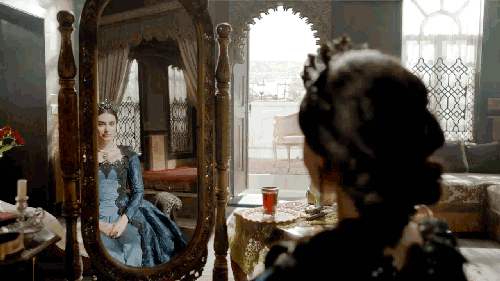
Turhan v. Telli
Whom will you choose?
#magnificent century kosem#kosemedit#kosem#muhteşem yüzyıl kösem#turhan hatice sultan#turhan sultan#telli sultan#humasah sultan#telly sultan#haseki humasah sultan#haseki turhan sultan
21 notes
·
View notes
Photo




Black and Blonde hair couples in period dramas-
1. Anna Petrovna (Anna Hatun) + Mahmud II- Kalbimin Sultani
2. Mary, Queen of Scots + Francis II- Reign
3. Telli Haseki Humasah Sultan + Ibrahim I- Muhtesem Yuzyil: Kosem
4. Ahmed I + Anastasia Hatun (Mahpeyker Kosem Sultan)- Muhtesem Yuzyil: Kosem
#anna hatun#Anna Petrovna#Anna Petrovna Hatun#sultan mahmud II#Mahmud II#ali ersan duru#Aleksandra Nikiforova#Mary Queen Of Scots#mary stuart#Adelaide Kane#Francis II#Francis II of France#toby regbo#telli haseki humasah sultan#haseki humasah sultan#Ibrahim I#Muge Boz#tugay mercan#Ahmed I#Sultan Ahmed#Sultan Ahmed I#anastasia#anastasia tsilimpiou#anastasia hatun#mahpeyker kosem sultan#Mahpeyker#mahpeyker sultan#Kosem Sultan#kosem#muhtesem yuzyil kosem
27 notes
·
View notes
Text
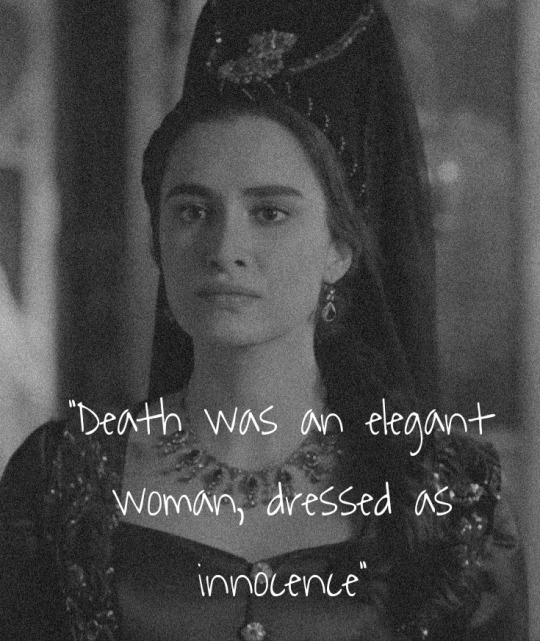


#history#magnificent century#muhteşem yüzyıl#ottoman#sultanas#ottoman sultanas#ottoman valide#ottoman history#valide sultan#baş haseki turhan sultan#turhan sultan#telli humasha sultan#telli haseki humasha sultan#humasah sultan#haseki humasha#valide halime sultan#halime#halime sultan#aesethic#phrases
18 notes
·
View notes
Text
This purple hat is worn on Hürrum Sultan in Magnificent Century in Season 4 (2014) and later worn on Telli Haseki Humasah Sultan in Magnificent Century: Kösem in Season 2 Episode 27 (2017)


#recycled costumes#magnificent century#Muhtesem Yüzyil#magnificent century kösem#Muhteşem Yüzyıl: Kösem#hürrem sultan#accessories#historical drama#period drama
3 notes
·
View notes
Text
Sultanate of Women (1/7)
Haseki Hürrem Sultan (c. 1502 – 15 April 1558)



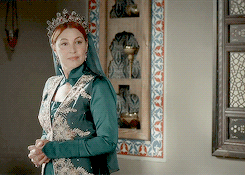
Haseki Hürrem Sultan parents are not known
Haeski Sultan (Legal Wife) of Sultan Suleiman I the Magnificent
Mother of Sehzade Mehmed, Mihrimah Sultan, Sehzade Abudallah, Selim II, Sehzade Bayezid and Sehzade Cihangir.
Grandmother of Ayse Humasah Sultan,Sultanzade Mehmed Bey, Murad Ill, Sehzade Mehmed, Sehzade Abduallah, Sehzade Cihangir , Sehzade Mustafa, Sehzade Osman, Sehzade Suleiman, Ismihan Sultan, Gevherhan Sultan, Sah Sultan, Fatma Sultan, Sehzade Orhan, Sehzade Osan (Sehzade Bayezid), Sehzade Abdullah (Sehzade Bayezid), Sehzade Mahmud, Sehzade Mehmed (Sehzade Bayezid), Mihrumah Sultan, Hatice Sultan, Ayse Sultan, and Hanzade Sultan.
Mother-in-law of Rustem Pasha (Grand Vizier), and Haseki Nurbanu Sultan (Valide Sultan of Sultan Murad IlI.
Hürrem Sultan the first slave to marry a Sultan and become Haeski Sultan and was the first to be the one to break the rule of one concubine one child.
27 notes
·
View notes
Photo





Ibrahim Han of the Ottoman Empire + the women in his life
#history#historyedit#ottoman history#kosem sultan#turhan hatice sultan#haseki hatice muazzez sultan#saliha dilasub sultan#haseki ayse sultan iii#haseki mahienver sultan#haseki sacbagli sultan#haseki sivekar sultan#haseki humasah sultan#sekerpare hatun#ayse sultan daughter of ahmed i#fatma sultan daughter of ahmed i#hanzade sultan daughter of ahmed i#kaya ismihan sultan daughter of murad iv#ottomanladiesedit#*womeninlife
385 notes
·
View notes
Photo










notable women who lived during the sultanate of women, but are not considered apart of it
#history#historyedit#weloveperioddrama#perioddramaedit#ayse hafsa sultan#Mahidevran Sultan#mahidevran hatun#ayse sultan#handan sultan#humasah sultan#kaya sultan#saliha dilasub sultan#telli haseki humasah sultan#hatice muazzez sultan#emetullah rabia gulnus sultan#Our edits#by Julia
212 notes
·
View notes
Text
Portrait of Şehzade Cihangir/Cihangir herceg portréja
Origin and early years
Cihangir was born in December 1531 or early spring 1532 as the last child of Hürrem Sultan and Sultan Suleiman I. When Cihangir was born, his parents had four older children and they already mourned another one child. In the case of his older siblings, it is clear that they were planned children, while Cihangir seems like an unexpected, late, surprise child. Suleiman was close to forty, and procreation was no longer one of his primary responsibilities, as he had four healthy living sons, the eldest of whom himself soon reached the age to become a father.
Cihangir was in poor health from birth, with one shoulder severely deformed. His physical deformity could have caused severe pain to the baby, who was under the constant supervision of doctors. In one of her letters, Hürrem wrote specifically, in detail, about an operation performed on the little boy. In this letter, Hürrem says that during the operation, a cyst was removed from the little boy’s shoulder and then the wound was treated.
Regardless of his deformity, his parents did everything they could to properly raise the child. And to compensate for his shortcomings, Cihangir testified to outstanding intelligence thanks to his sharp mind. With his very quick wit, he charmed not only his teachers but also his father. Moreover he had a charming personality, which together with his amazing talents and intelligency made him a perfect partnerto converse in depth with him on the most varied topics.
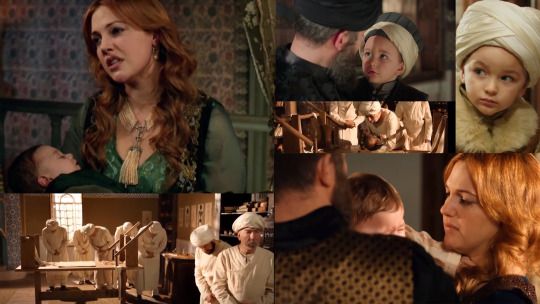
Relationship with his family
Because of Cihangir's illness, he always received more attention than his siblings. Hürrem certainly spent a lot of time with the little boy, which could have negatively affected Bayezid, who was the closest to Cihangir in age. Especially because the healthy Bayezid was paired with Cihangir instead of being educated together with his other brothers. In Bayezid, this pairing caused a lot of tension. Knowing Cihangir’s personality and intelligence, it is unlikely that he would not have felt Bayezid’s resentment and that would not have caused him pain. Bayezid could have been further frustrated by the fact that he also had to wait for his circumcision ceremony for Cihangir to be old enough. Eventually, the circumcision took place in 1539, when Bayezid was 12 years old, while Cihangir was 8. The ceremony lasted for 15 days and was celebrated together with Mihrimah’s wedding.
Cihangir’s relationship with his father is legendary. Suleiman was a true family-centric personality, but he spent more time with Cihangir than with any of his children. Not only could this be because Cihangir was a great interlocutor. Suleiman was the father of his sons and their ruler in the same time, and the princes were both his sons and his rivals. This duality seriously affected Suleiman's relationship with his sons, especially with his eldest child, Mustafa. However, it was precisely because of this duality that Cihangir was able to be the closest to his father. Because of his physical condition, Cihangir, with four healthy brothers, could not pose a threat to Suleiman's throne, so the sultan never had to consider his son as a competitor. Moreover because of his condition, Cihangir, unlike his brothers, was never able to get a province, so he spent his entire life in Istanbul with his parents. In the 1540s, Suleiman's health steadily deteriorated and so perhaps his suffering maybe brought him even closer to his sick child. And because of his health, he left Istanbul less often and he marched to campaigns less frequently , instead, he spendt more time with Cihangir: they went hunting to Edirne, often sailing out with the imperial galley. And the ambassadors were not reluctant to report the activites of the two in details, from which we know how often they traveled together and how much Suleiman enjoyed the company of his youngest son.
His older siblings, Mihrimah and Mehmed, treated him as a parent rather than a sibling because of the large age difference. We have more evidences that Cihangir spent a lot of time with Mihrimah throughout his life, so it can be assumed that the two siblings were close to each other. And because Cihangir spent his entire life in Istanbul, he could also be close to Mihrimah's daughter Ayşe Hümaşah and Prince Mehmed's daughter Hümaşah. The two girls spent a lot of time at Topkapi Palace, so they certainly met Cihangir regularly, who, because of his overwhelming personality, could have been a great uncle for the two girls.
Hürrem Sultan remained in the capital partly because of Cihangir in 1542, when Prince Mehmed received his first province. Cihangir could not leave the capital to keep up with his mother and brother, as he needed the care of the great doctors of the capital. Hürrem, on the other hand, could not leave her sick little boy alone. The relationship between two was presumably very close. But to compensate her older sons - who had to travel to their province alone - Hürrem visited them regularly, to which travels she mostly took Cihangir with herself. Their first journey may have taken place in the summer of 1543, when Hürrem visited Prince Mehmed in his province. Then they soon went to Konya together to visit Selim. When Selim was transferred to Manisa after the death of Prince Mehmed, Hürrem and Cihangir traveled there in 1546 and spent some time in Manisa. During these visits, Selim always showed the city to Cihangir and showed him the military barracks and perhaps took his brother with him to the meetings and introduced him to the pashas. Selim spent a lot of time with Cihangir during these trips, but also during campaigns, so we can assume that the two princes might have been close to each other.
In contrast, no information remained about the relationship between Bayezid and Cihangir. We know that Hürrem also visited Bayezid several times, but it is not clear that Cihangir accompanied her on these trips as well. However, it is unlikely that any childhood problems, fights would have seriously affected their relationship as adults.
In addition to his full-siblings, Cihangir also had a half-brother, Mustafa. The relationship between the two princes has been colored by many legends, but the reality is quite different. Mustafa left Istanbul in 1533, when Cihangir was still an infant. Later, no interaction was known between the two princes. Cihangir never visited Mustafa in his princely province, and there is no evidence that any letter was ever exchanged. Based on the evidences, there was no connection between the two princes, so they probably never stood close together.
Thus, although Cihangir could never compete for the throne and he could never live the life of the princes, yet he seemed happier than his brothers, since he had valuable human connections, he could also be very close to his parents.

His death and the circumstances
The prince left Istanbul with his father in 1553 to go on a campaign to the eastern borders, and during thir way, Prince Selim also joined them. However, Suleiman's goal was not only the campaign, he left Istanbul knowing that during the campaign he will execute his eldest son, Mustafa, on charges of treason. This act also clearly suggest that Cihangir was not close to Mustafa. For if that had been the case, Suleiman would never have exposed his favorite son to have to watch the death of his beloved brother. It is not known what Selim and Cihangir thought when they realised the fact of the execution of Mustafa. Selim certainly felt relieved, for thus he became the eldest prince, the potential heir. And Cihangir - knowing the law of fratricide - could have felt the same way, knowing that he would have been executed if Mustafa would have had ascended the throne. An ambassador also wrote about this topic in detail in his report. According to this, he learned of a conversation between Suleiman and Cihangir: Cihangir thought that Mustafa would not execute him because of his physical deformity, but Suleiman enlightened his son that Mustafa would spare none of them if he would sat on the throne. We cannot, of course, know the truth, what Mustafa would have done. However, it is likely that Cihangir was also relieved by Mustafa's death, as he would probably not have had to die if Selim had ascended the throne. For they were close to each other with Selim, and knowing Selims's sensitive soul, most probably he would not execute his sick brother. At least Cihangir had the best chances to stay alive with a sultan like Selim.
Either way, Mustafa was executed on October 6, 1553 by the order od Sultan Suleiman in his own tent. After the execution, the Janissaries revolted in the camp, the Grand Vizier, Cihangir's brother-in-law, had to be evacuated from the camp so he wouldn't be beaten to death by the soldiers. Certainly the two princes also may have been seriously concerned for their own life in the rebellious camp. Soon, however, the mood subsided and the campaign could continue. They arrived in Aleppo on November 8 1553, fortunately a very detailed eyewitness account survived from this event. According to him, "Prince Cihangir entered the city before Sultan Suleiman, so he enjoyed the same greetings as his father a few minutes later." There was no sign that the prince was ill or depressed. Thus, the legends that he died in the grief he felt over the execution of Prince Mustafa, are simply not true.
In Aleppo, in the third week after their arrival, the prince suddenly fell ill. The exact disease is not known, it is possible that he drank infected water or had another desease that easily hurt his sick body. He struggled for four days, and his doctors tried to save his life by select methods, but on 27 November 1553, the disease finally triumphed. His death must have shocked the Sultan, who was falling into deep and deeper depression anyway. The sensitive soul of Prince Selim was also probably hurted by the death of his brother. However, Suleiman could not mourn for a long time, for rumors had spread in Aleppo that it was the sultan who died. And this news caused serious unrest among the Janissaries, so the devastated sultan had to make a public appearance in order to end the rumors.
The prince's body was eventually accompanied by important statesmen back to Istanbul, where a huge crowd awaited for the unfortunate prince. The news of his death probably preceded the arrival of the his body. There are no accounts of when and how Hürrem received the news and how she reacted. However, one can imagine the pain of a mother who had already buried her two children before and who was certainly felt guilty of what had happened to Prince Mustafa. Besides, Cihangir has really been by her side ever since he was born, he was the youngest, the sickest child of Hürrem... Cihangir's funeral was attended by the highest-ranking pashas. Eventually, Cihangir was buried in the tomb of his brother, Prince Mehmed, right next to him. With this, Hürrem’s eldest and youngest son, the two purest princes, can rest side by side forever.
After Suleiman returned home, at the request of Hürrem, he ordered the construction of a wooden mosque in Istanbul to be built for the sake of Cihangir. The mosque was designed by Mimar Sinan, similar to other major construction projects during the reign of Suleiman. The mosque no longer exists today, but the place where it was, to this day commemorates Prince Cihangir. This quarter is today called Cihangir district. Legend has it that this was Cihangir’s favorite part of Istanbul and he often traveled here.

Used sources: L. Peirce - The imperial harem; L. Peirce - Empress of the East
* * *
Származása és korai évei
Cihangir 1531 decemberében vagy 1532 kora tavaszán született Hürrem szultána és Szulejmán szultán utolsó gyermekeként. Cihangir érkezésekor szüleinek négy idősebb, élő gyermeke volt és egy kisgyermeket már el is gyászoltak. Idősebb testvérei esetében egyértelmű, hogy tervezett gyermekek voltak, míg Cihangir olybá tűnik váratlan, meglepetés gyermek volt. Szulejmán közel volt a negyvenhez, az utódnemzés már nem tartozott elsődleges feladatai közé, hiszen négy egészséges élő fia volt, akik közül a legidősebb, maga is hamarosan megfelelő korba lépett ahhoz, hogy apává váljon.
Cihangir születésétől kezdve rossz egészségi állapotban volt, egyik válla súlyosan deformált volt. Fizikai deformitása komoly fájdalmakat okozhatott a kisbabának, aki az orvosok állandó felügyelete alatt állt. Hürrem egyik levelében konkrétan, részletesen ír egy operációról, amit a kisfiún végeztek el. Levelében Hürrem elmondja, hogy az operáció során eltávolítottak egy cisztát a kisfiú vállából, majd kezelték a sebet.
Deformitásától függetlenül szülei mindent megtettek a gyermek megfelelő neveléséhez. Cihangir pedig, hogy kompenzálja hiányosságait, éles eszének köszönhetően kimagasló műveltségről és intelligenciáról tett bizonyságot. Igen gyors észjárásával nem csak tanítóit, de apját is levette a lábáról, emellett pedig elbűvölő személyisége volt, értése a művészetekhez és a legváltozatosabb témákban is mélyrehatóan lehetett vele társalogni.

Viszonya a családjával
Cihangir betegsége miatt mindig több figyelmet kapott, mint testvérei. Hürrem szultána minden bizonnyal sok időt töltött a kisfiúval, ami főleg a hozzá korban legközelebb álló Bayezidet érinthette negatívan. Különösen azért, mert az egészséges Bayezidet ahelyett, hogy többi bátyjával együtt oktatták volna Cihangirral párosították. Bayezidben ez a párosítás sok feszültséget okozott. Ismerve Cihangir személyiségét és intelligenciáját, valószínűtlen, hogy ne érezte volna Bayezid neheztelését és ez ne okozott volna neki fájdalmat. Bayezidben tovább növelhette a csalódottságot, hogy körülmetélési szertartásával is meg kellett várnia, hogy Cihangir elég idős legyen a szertartáshoz. Végül 1539-ben került erre sor, ekkor Bayezid 12 éves volt, míg Cihangir 8. A szertartás 15 napig tartott és vele együtt ünnepelték Mihrimah esküvőjét is.
Cihangir kapcsolata édesapjával legendás. Szulejmán igaz családcentrikus személyiség volt, ám minden gyermekénél több időt töltött Cihangirral. Ennek oka nem csak az lehetett, hogy Cihangir remek beszélgetőtárs volt. Szulejmán egyszerre volt apja fiainak és uralkodójuk. A hercegek pedig egyszerre voltak a fiai és vetélytársai. Ez a kettősség komolyan befolyásolta Szulejmán viszonyát fiaival, különösen legidősebb gyermekével Musztafával. Azonban épp ennek a kettősségnek köszönhette Cihangir azt, hogy ő állhatott a legközelebb édesapjához. Cihangir ugyanis fizikai állapota miatt, 4 egészséges bátyj mellett nem jelenthetett veszélyt Szulejmán trónjára, így a szultánnak sosem kellett vetélytársként tekintenie fiára. Különösen igaz ez, hogy állapota miatt Cihangir, bátyjaival ellentétben, sosem kaphatott tartományt, így egész életét Isztambulban töltötte szülei mellett. Az 1540-es években Szulejmán egészségi állapota folyamatosan romlott, talán a szenvedése is közelebb hozta beteg gyermekéhez. Egészsége miatt pedig egyre ritkábban hagyta el Isztambult és vonult hadjárata, helyette inkább Cihangirral töltötte idejét: vadászni jártak Edirnébe, gyakran hajóztak ki a birodalmi gályával. A követek pedig nem voltak restek részletesen lejegyezni kettejük időtöltését, innen tudjuk, hogy milyen gyakran utazgattak együtt és azt, hogy Szulejmán mennyire élvezte legkisebb fia társaságát.
Idősebb testvérei, Mihrimah és Mehmed inkább viselkedtek vele szülőként, mint testvérként a nagy korkülönbség miatt. Arról több bizonyíték is rendelkezésünkre áll, hogy Cihangir sok időt töltött Mihrimah társaságában egész élete során, így feltételezhető, hogy a két testvér közel állt egymáshoz. Amiatt pedig, hogy Cihangir egész életét Isztambulban töltötte közel állhatott Mihrimah lányához Ayşe Hümaşahoz és Mehmed herceg kislányához, Hümaşahoz is. A két lány ugyanis rengeteg időt töltött a Topkapi Palotában, így minden bizonnyal rendszeresen találkoztak Cihangirral is, aki pedig lehengerlő személyisége miatt remek nagybácsi lehetett a két kislány számára.
Hürrem szultána részben Cihangir miatt maradt a fővárosban 1542-ben, amikor Mehmed herceg megkapta első tartományát. Cihangir ugyanis nem hagyhatta el a fővárost, hogy anyjával és bátyjával tarthasson, hiszen szüksége volt a főváros nagyszerű orvosaira. Hürrem viszont nem hagyhatta magára beteg kisfiát. Kettejük viszonya feltehetőleg igen szoros volt. Hürrem, hogy kompenzálja idősebb fiait - akik egyedül kellett, hogy tartományukba utazzanak - rendszeresen látogatta őket, mely utazásokra a legtöbbször magával vitte Cihangirt is. Első közös utazásuk 1543 nyarán történhetett, mikor Hürrem meglátogatta Mehmed herceget annak tartományában. Majd hamarosan Konyába is együtt mentek Szelim herceghez. Mikor Szelimet áthelyezték Maniszába Mehmed herceg halála után, Hürrem és Cihangir 1546-ban utaztak el is hosszabb időt töltöttek ott. Ezen látogatások alkalmával Szelim mindig körbevezette Cihangirt a városban, megmutatta neki a katonai barakkokat, a jegyzőkönyveket, talán az akkor esedékes ülésekre, meghallgatásokra is magával vitte öccsét. Szelim egyébként kifejezetten sok időt töltött Cihangirral ezen utazások alatt, de hadjáratok alatt is, emiatt feltételezhetjük, hogy a két herceg talán közel állt egymáshoz.
Ezzel szemben Bayezid és Cihangir viszonyáról nem maradt hátra információ. Tudott, hogy Hürrem meglátogatta többször Bayezidet is, azonban az nem tiszta, hogy Cihangir ezekre az utakra is elkísérte e. Az azonban valószínűtlen, hogy az esetlegesen fennálló gyermeki sérelmek felnőttként is komolyan kihatottak volna kapcsolatukra.
Édestestvérei mellett Cihangirnak volt egy féltestvére is, Musztafa. A két herceg viszonyát sok legenda színezte ki, a valóság azonban merőben más. Musztafa 1533-ban elhagyta Isztambult, mikor Cihangir még csak csecsemő volt. Később pedig semmilyen interakció nem ismert a két herceg között. Cihangir sosem látogatta meg Musztafát annak hercegi posztján és arra sincs bizonyíték, hogy valaha levelet váltottak volna. A bizonyítékok alapján a két herceg között nem volt semmiféle kapcsolat, így valószínűleg sosem álltak közel egymáshoz.
Így tehát, bár Cihangir sosem lehetett versenyben a trónért, sosem élhette a hercegek életét mégis szerencsésebbnek tűnik bátyjainál, hiszen értékes emberi kapcsolatai voltak, igen közel állhatott szüleihez is.

Halála és annak körülményei
A herceg 1553-ban apjával együtt hagyta el Isztambult, hogy hadjáratra induljanak a keleti határokhoz, majd útközben csatlakozott hozzájuk Szelim herceg is. Szulejmán célja azonban nem csak a hadjárat volt, úgy hagyta el Isztambult, hogy tudta, a hadjárat során ki fogja végeztetni legidősebb élő fiát, Musztafa herceget árulás vádjával. Ez a cselekedet is tisztán mutatja, hogy Cihangir nem volt közel Musztafához. Ha ugyanis így lett volna, Szulejmán sosem tette volna ki kedvenc fiát annak, hogy végig kelljen néznie szeretett bátyja halálát. Nem tudni, hogy Szelim és Cihangir mit gondoltak amikor szembesültek Musztafa kivégzésének tényével. Szelim minden bizonnyal megkönnyebbültséget érzett, hiszen így ő vált a legidősebb herceggé, a potenciális örökössé. Cihangir pedig ismerve a testvérgyilkosság törvényét hasonlóan érezhetett, hiszen tisztában volt vele, hogy Musztafa trónralépése esetén kivégezték volna. Erről egy követ is részletesen írt beszámolójában. Eszerint tudomására jutott egy beszélgetés Szulejmán és Cihangir között: Cihangir azt gondolta, hogy Musztafa őt nem végeztetné ki fizikai deformitása miatt, Szulejmán azonban felvilágosította fiát, hogy Musztafa egyikőjüket sem kímélné, ha trónra ülne. A teljes igazságot, azt, hogy Musztafa mit tett volna, természetesen nem tudhatjuk. Az azonban valószínű, hogy Cihangir is megkönnyebbült Musztafa halálával, hiszen Szelim trónralépése esetén nagy valószínűséggel nem kellett volna meghalnia. Szelimmel ugyanis közel álltak egymáshoz és a herceg érzékeny lelke sem engedte volna neki, hogy kivégeztesse beteg öccsét.
Akárhogyan is, Musztafát 1553 október 6-án Szulejmán szultán kivégeztette saját sátrában. A kivégzés után a janicsárok fellázadtak a táborban, a nagyvezírt, Cihangir sógorát úgy kellett kimenekíteni a táborból, nehogy meglincseljék. Minden bizonnyal a két herceg is komolyan aggódhatott testi épségéért a lázongó táborban. Hamarosan azonban a kedélyek lenyugodtak és tovább indulhattak és folytatódhatott a hadjárat. 1553 November 8-án érkeztek meg Aleppoba, melyről szerencsére fenn maradt egy igen részletes szemtanúi beszámoló is. Eszerint: "Cihangir herceg Szulejmán szultán és Szelim herceg előtt lépett be a városba, így ugyanaz az üdvrivalgás járt neki, mint ami édesapjának is néhány perccel később". Semmi nyoma nem volt annak, hogy a herceg gyengélkedett volna, depressziós lett volna. Így tehát azok a legendák, melyek szerint a Musztafa herceg kivégzése felett érzett gyászába halt bele, egyszerűen nem igazak.
Aleppoban aztán a megérkezésüket követő harmadik héten, a herceg hirtelen beteg lett. A pontos betegség nem ismert, lehetséges, hogy fertőzött vizet ivott vagy más járványt kapott el, melyek egyébként is beteges testét könnyedén levették lábról. Négy napig küzdött, orvosai pedig válogatott módszerekkel próbálták megmenteni életét, azonban 1553 november 27-én végül a betegség győzedelmeskedett. Halála minden bizonnyal sokkolhatta az egyébként is egyre mélyebb depresszióba zuhanó szultánt. Szelim herceg érzékeny lelkét is valószínűleg megviselte szeretett öccse halála. Szulejmán azonban nem gyászolhatott sokáig, ugyanis Aleppoban szárnyra kaptak olyan pletykák, miszerint a szultán volt az aki meghalt. A janicsárok között ez a hír pedig komoly zavargásokat okozott, így a gyászoló, összetört szultánnak nyilvános megjelenést kellett tennie, hogy egyszer és mindenkorra lezárhassa a pletykákat.
A herceg testét végül fontos államférfiak kísérték vissza Isztambulba, ahol óriási tömeg várta a szerencsétlen sorsú herceget. Halálhíre valószínűleg megelőzte a herceg testének érkezését. Arról nem maradtak fenn beszámolók, hogy Hürrem szultána mikor kapta meg a hírt és hogyan reagált. Azonban el lehet képzelni annak az anyának a fájdalmát, aki már két gyermekét eltemette korábban és akinek minden bizonnyal bűntudata volt a Musztafa herceggel történtek miatt. Emellett pedig Cihangir valóban születése óta folyamatosan mellette volt, ő volt a legkisebb, a beteges... Cihangir temetésén a legmagasabb beosztású férfiak vettek részt. Végül bátyja, Mehmed herceg türbéjében helyezték örök nyugalomra Cihangirt, közvetlenül Mehmed mellé. Ezzel Hürrem legidősebb és legfiatalabb fia, a két legtisztább herceg egymás mellett nyugodhatnak.
Szulejmán hazatérte után, Hürrem kérésére elrendelte egy fa-mecset építtetését Isztambulban. A mecsetet Mimar Sinan tervezte, hasonlóan a többi Szulejmán korában zajló nagy építkezési projekthez. A mecset napjainkban már nem létezik, ám a hely, ahol feküdt a mai napig Cihangir hercegnek állít emléket. Ezt a negyedet hívják ma Cihangir városrésznek. A legenda úgy tartja, hogy ez volt Cihangir kedvenc része Isztambulban és gyakran kirándult ide.

Felhasznált források: L. Peirce - The imperial harem; L. Peirce - Empress of the East
#Suleyman I#Suleiman the Magnificent#KanuniSultanSüleyman#hürrem sultan#haseki hürrem sultan#Mihrimah Sultan#sehzade selim#Selim II#sehzade bayezid#cihangir#Sehzade mehmed#sehzade mustafa#sehzade cihangir#şehzade cihangir#ayse humasah#humasah
54 notes
·
View notes
Photo

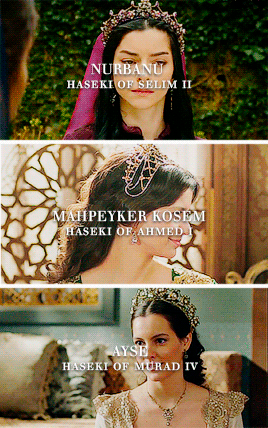


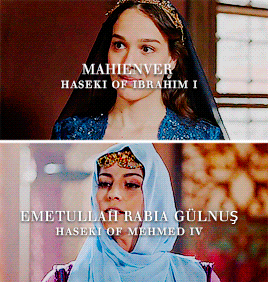
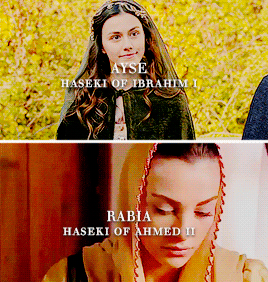
The Hasekis of the Ottoman Empire - requested by anon
Sources:
-The Structure of the Ottoman Dynasty, by A. D. Alderson
-Bu Mülkün Kadın Sultanları, by Necdet Sakaoğlu
-Padişahların Kadınları ve Kızları, by M. Çağatay Uluçay
#historyedit#perioddramaedit#magnificent century#muhteşem yüzyıl kösem#magnificent century kosem#muhteşem yüzyıl#history#hurrem sultan#nurbanu sultan#safiye sultan#kosem sultan#meleksima sultan#haseki ayse sultan#sanavber hatun#turhan sultan#saliha dilasub sultan#hatice muazzez sultan#telli haseki humasah sultan#sivekar hatun#mahienver sultan#emetullah rabia gulnus sultan#rabia sultan#mc#mc: kosem#my*#myk*#hurremsultan*#nurbanusultan*#safiyesultan*#kosemsultan*
860 notes
·
View notes